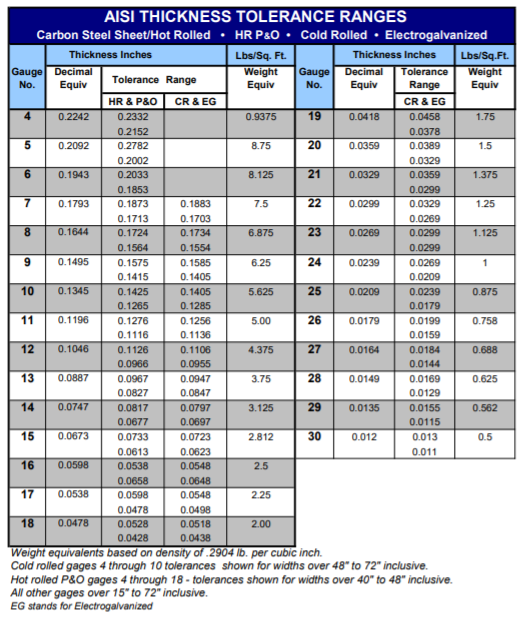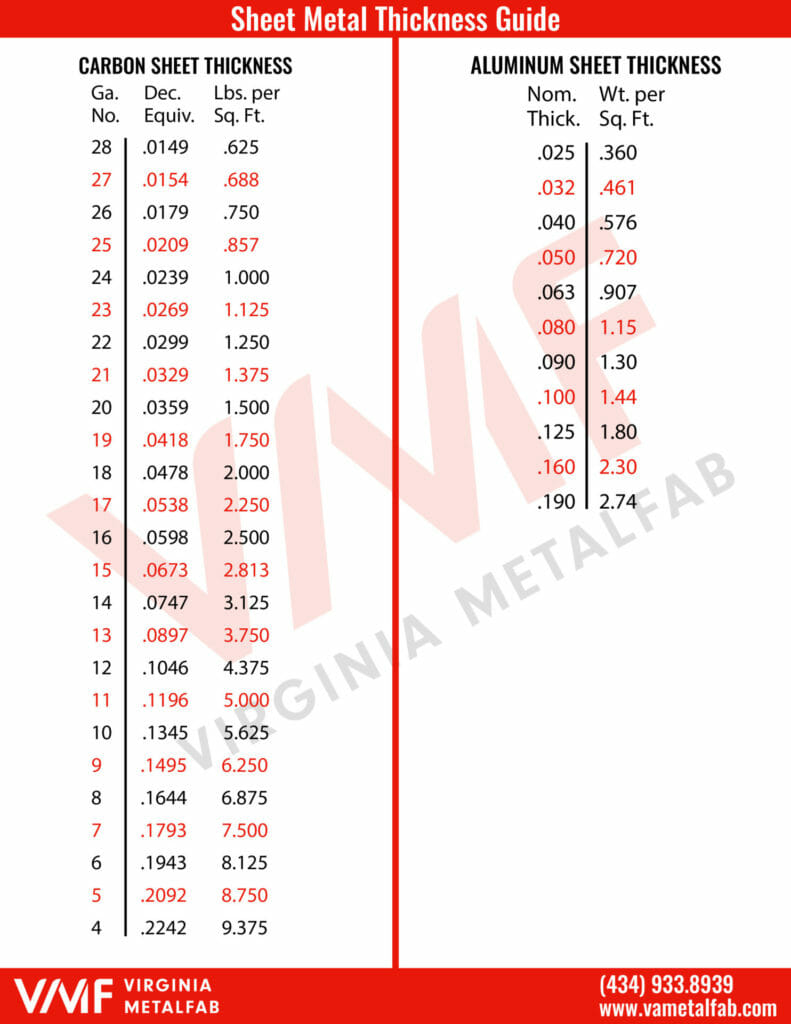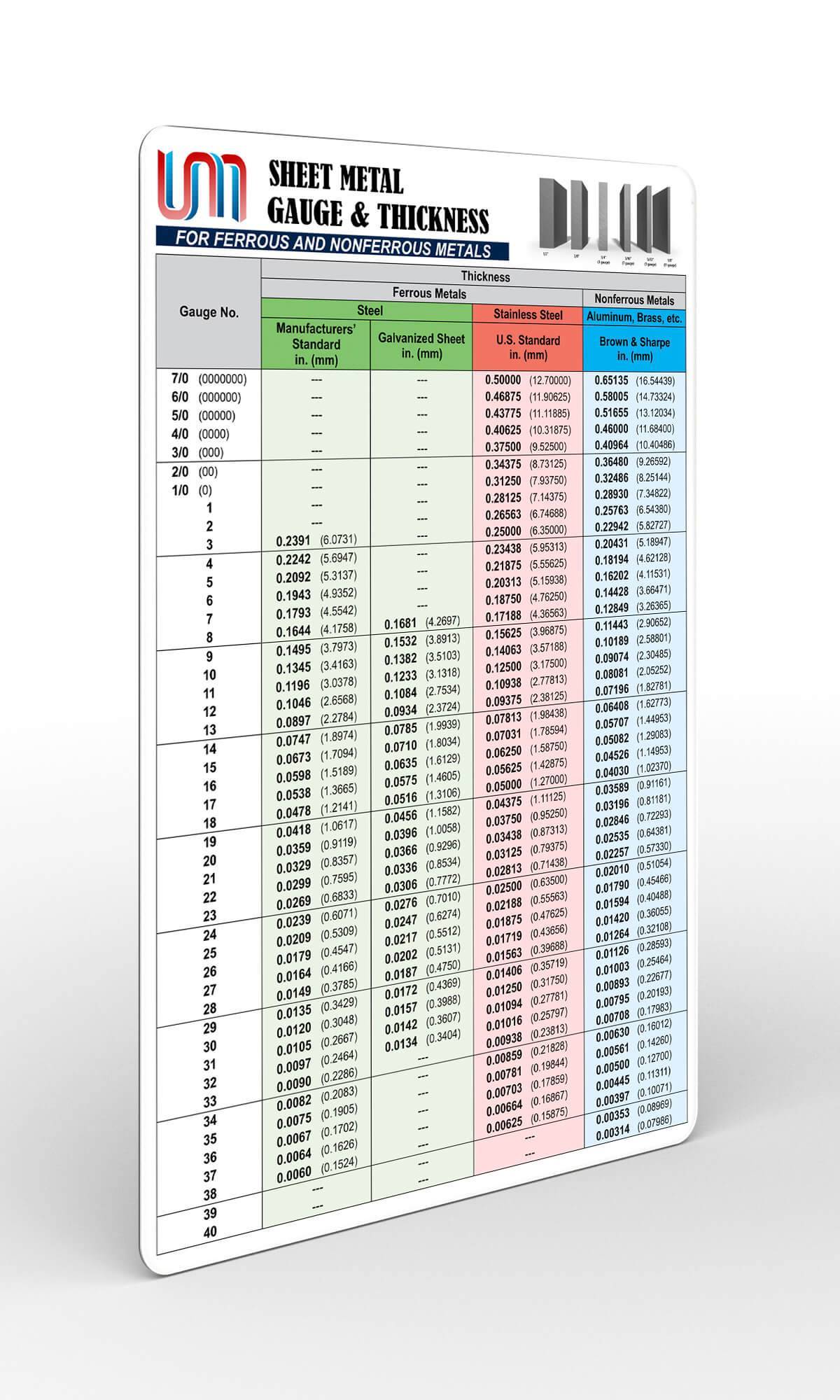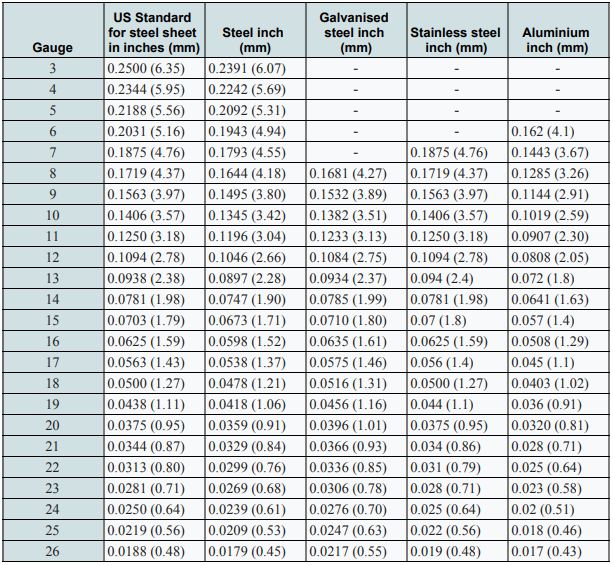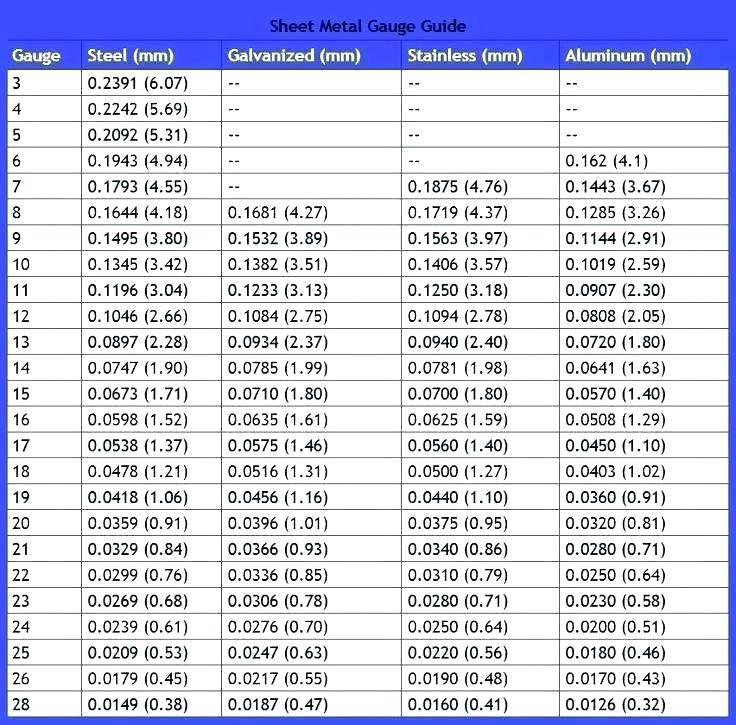Common Sheet Metal Thicknesses - Typical thickness ranges are 0.5 to 6 mm for steel, 0.2 to 5 mm for aluminum, 0.4 to 6 mm for stainless steel, and 0.2 to 3 mm for. Metals gauges are standard numbers developed by measuring the thickness of sheet metal in relation to its weight per square. 38 rows the chart below can be used to determine the equivalent sheet thickness, in inches or millimeters, for a gauge number from.
38 rows the chart below can be used to determine the equivalent sheet thickness, in inches or millimeters, for a gauge number from. Typical thickness ranges are 0.5 to 6 mm for steel, 0.2 to 5 mm for aluminum, 0.4 to 6 mm for stainless steel, and 0.2 to 3 mm for. Metals gauges are standard numbers developed by measuring the thickness of sheet metal in relation to its weight per square.
Typical thickness ranges are 0.5 to 6 mm for steel, 0.2 to 5 mm for aluminum, 0.4 to 6 mm for stainless steel, and 0.2 to 3 mm for. Metals gauges are standard numbers developed by measuring the thickness of sheet metal in relation to its weight per square. 38 rows the chart below can be used to determine the equivalent sheet thickness, in inches or millimeters, for a gauge number from.
What Is Sheet Metal Seattle, Washington Metal Werks
Metals gauges are standard numbers developed by measuring the thickness of sheet metal in relation to its weight per square. Typical thickness ranges are 0.5 to 6 mm for steel, 0.2 to 5 mm for aluminum, 0.4 to 6 mm for stainless steel, and 0.2 to 3 mm for. 38 rows the chart below can be used to determine the.
Sheet Metal Thickness CHART Sheet Metal Procedural Knowledge
Metals gauges are standard numbers developed by measuring the thickness of sheet metal in relation to its weight per square. Typical thickness ranges are 0.5 to 6 mm for steel, 0.2 to 5 mm for aluminum, 0.4 to 6 mm for stainless steel, and 0.2 to 3 mm for. 38 rows the chart below can be used to determine the.
Carbon Steel Metal Products Trusted Steel Metal Supplier
Typical thickness ranges are 0.5 to 6 mm for steel, 0.2 to 5 mm for aluminum, 0.4 to 6 mm for stainless steel, and 0.2 to 3 mm for. Metals gauges are standard numbers developed by measuring the thickness of sheet metal in relation to its weight per square. 38 rows the chart below can be used to determine the.
Resources Virginia MetalFab
Typical thickness ranges are 0.5 to 6 mm for steel, 0.2 to 5 mm for aluminum, 0.4 to 6 mm for stainless steel, and 0.2 to 3 mm for. Metals gauges are standard numbers developed by measuring the thickness of sheet metal in relation to its weight per square. 38 rows the chart below can be used to determine the.
Steel sheet metal gauge chart MS/ carbon steel thicknesses
38 rows the chart below can be used to determine the equivalent sheet thickness, in inches or millimeters, for a gauge number from. Typical thickness ranges are 0.5 to 6 mm for steel, 0.2 to 5 mm for aluminum, 0.4 to 6 mm for stainless steel, and 0.2 to 3 mm for. Metals gauges are standard numbers developed by measuring.
Metric Sheet Metal Thickness A Comprehensive Guide & Chart Hungthai
Metals gauges are standard numbers developed by measuring the thickness of sheet metal in relation to its weight per square. Typical thickness ranges are 0.5 to 6 mm for steel, 0.2 to 5 mm for aluminum, 0.4 to 6 mm for stainless steel, and 0.2 to 3 mm for. 38 rows the chart below can be used to determine the.
Standard Sheet Metal Gauge Thickness Chart
Metals gauges are standard numbers developed by measuring the thickness of sheet metal in relation to its weight per square. 38 rows the chart below can be used to determine the equivalent sheet thickness, in inches or millimeters, for a gauge number from. Typical thickness ranges are 0.5 to 6 mm for steel, 0.2 to 5 mm for aluminum, 0.4.
Metal Sheet Thickness Gauge
Metals gauges are standard numbers developed by measuring the thickness of sheet metal in relation to its weight per square. 38 rows the chart below can be used to determine the equivalent sheet thickness, in inches or millimeters, for a gauge number from. Typical thickness ranges are 0.5 to 6 mm for steel, 0.2 to 5 mm for aluminum, 0.4.
Printable Sheet Metal Gauge Chart
38 rows the chart below can be used to determine the equivalent sheet thickness, in inches or millimeters, for a gauge number from. Metals gauges are standard numbers developed by measuring the thickness of sheet metal in relation to its weight per square. Typical thickness ranges are 0.5 to 6 mm for steel, 0.2 to 5 mm for aluminum, 0.4.
Sheet Metal Thickness Chart Sst
Typical thickness ranges are 0.5 to 6 mm for steel, 0.2 to 5 mm for aluminum, 0.4 to 6 mm for stainless steel, and 0.2 to 3 mm for. 38 rows the chart below can be used to determine the equivalent sheet thickness, in inches or millimeters, for a gauge number from. Metals gauges are standard numbers developed by measuring.
38 Rows The Chart Below Can Be Used To Determine The Equivalent Sheet Thickness, In Inches Or Millimeters, For A Gauge Number From.
Typical thickness ranges are 0.5 to 6 mm for steel, 0.2 to 5 mm for aluminum, 0.4 to 6 mm for stainless steel, and 0.2 to 3 mm for. Metals gauges are standard numbers developed by measuring the thickness of sheet metal in relation to its weight per square.


